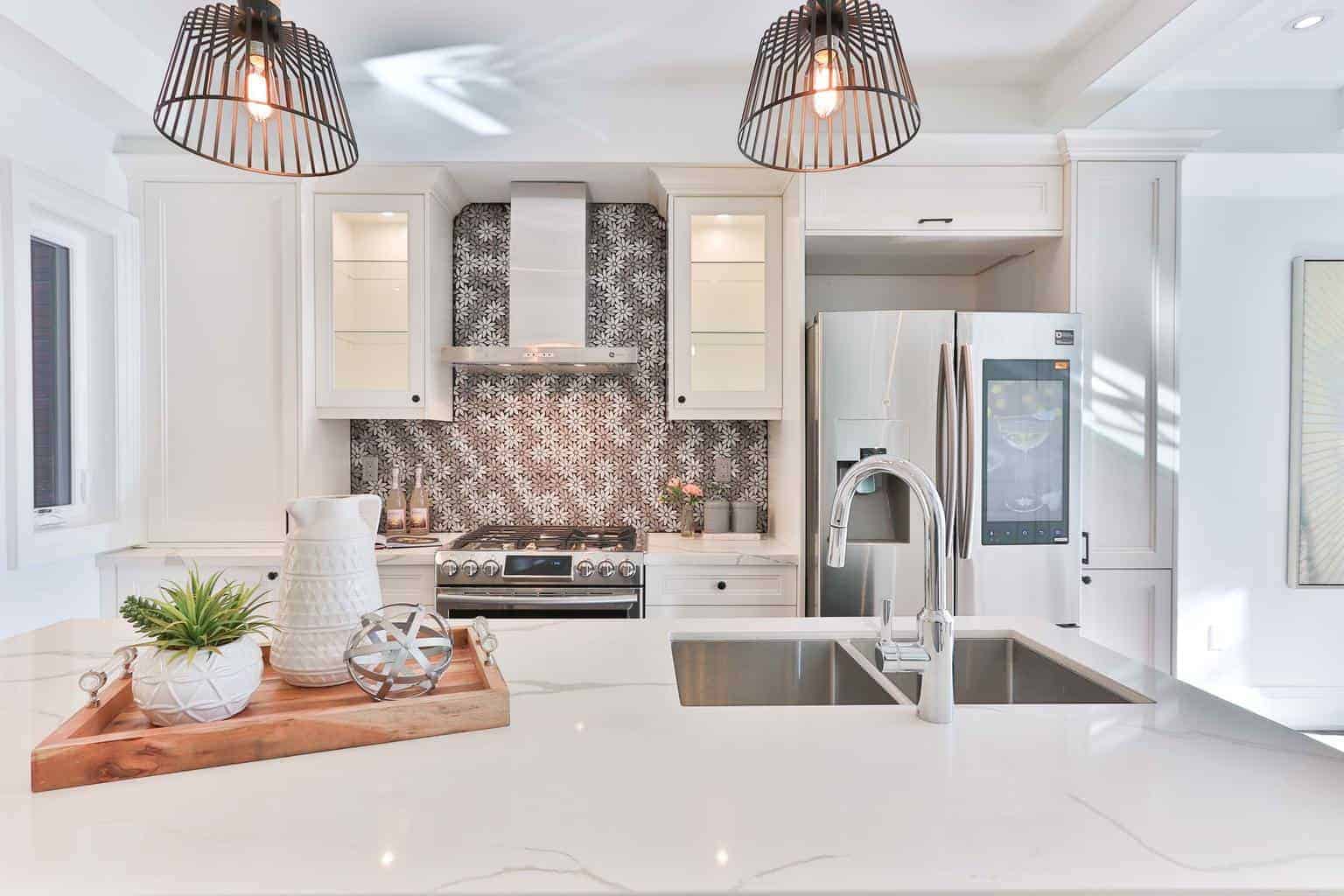Are you looking to upgrade the kitchen or add new tiling to the bathroom? A home improvement or remodel can enhance your home and be a great investment, but you may not have enough funds to start or complete the remodel. Some homeowners tap into their home equity to get the funding they need for home improvements. A home equity loan or home equity line of credit (HELOC) could be a viable option to pay for a major renovation.
You should first understand how they work and the key benefits these loan products offer. It’s equally important to know about other funding options that may be a better fit to fund your home improvements.
How to Use Equity to Finance Home Improvements
Home equity loans and home equity lines of credit (HELOCs) are debt products many homeowners use to fund home renovations. These financial products let you obtain additional capital that is secured by your home. The great thing about home equity is that it grows each month through mortgage payments and property appreciation.
How to Use a Home Equity Loan for Home Improvement
Home equity loans allow you to borrow between 80 – 90% of your home’s current value minus what you still owe on the mortgage. To illustrate, if your home is worth $425,000 and you owe $315,000 on your mortgage, you could be eligible for a home equity loan up to $67,500. Of course, borrowing more than 80% of your home through this financing will not trigger private mortgage insurance, but if you have been paying PMI already, it will stick around if you use a HELOC or home equity loan.
When you apply for a home equity loan, the lender will review your income, credit score, mortgage balance, financial obligations, and your home’s market value to determine the maximum amount you can borrow.
Home equity loans act as the second mortgage and come with a fixed interest rate. Loan proceeds are disbursed as a lump sum and payable in equal monthly installments over a term of five to 20 years. Be mindful that these loans are secured, so failure to make timely payments could put your home at risk for foreclosure. Opting for a 20-year term is a good option if you want to reduce your monthly payments. Of course, you pay more interest in the long run, but some homeowners and real estate investors prefer favorable cash flow in the present.
How to Use a Home Equity Line of Credit (HELOC)
If you’re approved for a HELOC, you’ll have access to a line of credit. The amount you’re eligible for is also determined by the equity in your home, and HELOCs also act as a second mortgage.
You’re free to withdraw as much cash as you need (up to the limit) during the draw period, usually between five and 10 years. You will also be responsible for interest-only payments during this window. When the draw period ends, you can no longer access funds, and you will begin making principal and interest payments for a period of 10 to 20 years.
Home Equity Loans vs. HELOCs: The Difference
Although home equity loans and HELOCs are similar, there are a few distinct differences between the two. Home equity loans give you all the money at once that you pay back over time. But a HELOC gives you access to a revolving line of credit, and you only have to pay back what you borrow. Also, home equity loans have fixed interest rates, making monthly payments more predictable. By contrast, HELOC loans use variable interest rates, which make monthly payments less predictable.
The Benefits of Using a Home Equity Loan for Home Improvement Projects
If you are planning a home improvement project, a home equity loan can be a great resource. Home equity loans offer several benefits to homeowners looking to fund renovations and other projects.
Potential Increase in Home Value
With the right improvements, you can potentially increase the value of your home. For example, updating kitchen cabinets, fixing structural issues, and addressing other areas can help your home command a higher price in the future. Consult with a knowledgeable real estate professional to inquire about your renovation’s potential impact on your home’s value. You should assess the time and cost of the home renovation and the potential ROI before investing money into the project.
Competitive Interest Rates
The interest rate significantly impacts how much you pay over time. Depending on the size of the loan, a single percentage point can increase your spending by hundreds of dollars per month. You could get financing with a credit card or personal loan, but these financial products have higher interest rates than what you can expect from home equity loans. Consequently, they’re not recommended to fund home improvements as you could spend several hundred or even thousands of dollars more in interest.
Fixed Monthly Payment
You will enjoy a fixed monthly payment that can easily be worked into your monthly budget. The interest rate is also fixed, so you won’t have to worry about changes to your monthly payment over the loan term. Fixed payments create more consistency. A home equity line of credit has a variable interest rate, but you only pay interest when you borrow against the credit line.
Extended Repayment Period
Unlike personal loans that generally offer repayment terms of three to five years, you could get up to 20 years to repay your home equity loan. In addition, the payment extension lets you spread the loan amount over more years, reducing how much you owe each month. This payment structure is a boon for rental property investors who are more concerned about present cash flow than paying more interest in the long run.
Credit cards also give you an extended period to pay. You only have to make a small minimum payment each month, but dragging out repayment could cost you a fortune in interest. You will also have to contend with an expensive cash advance fee if you go that route with your credit card.
Tax Benefits
The interest paid on a home equity loan could provide you with tax cuts if you itemize deductions. Home renovations can also lower your tax bill. You can’t use a home improvement project as a tax deduction when it happens, but you can add them to your home’s cost basis. A higher cost basis reduces your capital gains and, consequentially, your taxes. You will have to keep track of your home improvement projects and how much you spend. Consult with a tax preparer to learn more about how this itemized deduction works and if it’s available to you.
Lower Closing Costs
You could use a cash-out refinance to pay for home improvements. A cash-out refinance changes the terms of your loan, and opting for a longer term can reduce your monthly expenses. However, the closing costs and fees on these loan products are sometimes higher than what you’ll be charged for a home equity loan. So, instead, you can save money with a home equity loan or HELOC and put those funds into the home renovation.
The Cons of Using a Home Equity Loan for Home Improvement Projects
It’s important to understand the pros and cons of home equity financing. Reviewing any financial product from both perspectives is the best way to determine what is right for you.
The Capital is Secured by Your Home
When you take out a home equity loan or line of credit, your home becomes collateral. If you cannot keep up with loan payments, the lender can take your home and sell it to recoup the loan. While secured loans increase the borrower’s risk, this dynamic also results in lower interest rates. Lenders feel more confident working with borrowers who assume more risk, and they reward that behavior with more competitive rates.
You Get into More Debt
Taking out any loan will put you into more debt. Home equity loans and lines of credit have more attractive interest rates than personal loans and credit cards, but debt is still debt. You can manage it better with this route since you can get a 5-20-year loan term from most lenders. You should assess if you can afford the additional payments before investing money into a home renovation project.
A HELOC or home equity loan does speed up your path to a home renovation, which can be worth the extra debt instead of saving up for the project. Inflation has significantly raised the costs of labor and materials. Using a loan instead of waiting to save enough money for the project could help you avoid further inflation on the prices of goods and services.
Not Every Home Renovation Yields a Return on Investment
A home renovation is not guaranteed to increase your home’s value. You also have to consider if the property’s value bump will compensate for the expenses you poured into the home improvement project. Some homeowners may care more about the property’s functionality than the ROI, but it’s a good idea to keep this in mind. Investors have a different mentality. They measure success based on the ability to generate an ROI from home renovations. You should consult a professional before renovating your home or rental property to increase the likelihood of a profitable investment.
Opportunity Cost
If you take out a home equity loan or line of credit for renovations, you cannot use that same money to purchase another property or make any other investment. This is because it takes time to rebuild equity in your home and be in a position where you can request another HELOC or home equity loan. A loan can provide the financing you need to make home renovations, but make sure it is the best way to use the loan proceeds at that moment.
Should You Get a Home Equity Loan or HELOC for a Remodel?
Using a Home Equity Loan or HELOC can be a great way to fund home improvements and remodeling projects. With a HELOC, you borrow against your home’s value without selling it or taking out a loan. This means you don’t have to worry about repaying the loan if something goes wrong with the project. You also don’t have to worry about missing payments since you’ll only pay interest on what you use.







